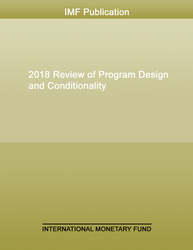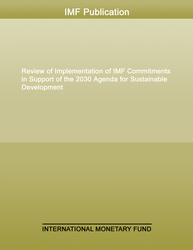
Development Committee: The Managing Director's Written Statement
Development Committee: The Managing Director's Written Statement
READ MORE...
Volume/Issue:
Volume 2025
Issue 011
Publication date: April 2025
ISBN: 9798229008211
$5.00
Add to Cart by clicking price of the language and format you'd like to purchase
Available Languages and Formats
| English |
Prices in red indicate formats that are not yet available but are forthcoming.
Topics covered in this book
This title contains information about the following subjects.
Click on a subject if you would like to see other titles with the same subjects.
Exports and Imports , Finance , Inflation , Economics- Macroeconomics , Public Finance , growth-inflation trade-off , near-term inflation risk , IMF support , IMF-World Bank debt sustainability framework , headline inflation , inflation expectation , IMF hinge , Financial sector stability , Trade tensions , Inflation , Structural reforms , Global
Also of interest
Summary
The world economy is at a pivotal juncture. At the center are shifting policy priorities by major economies and escalating trade tensions, in the face of high public debt, weak medium-term growth prospects, and transformative forces reshaping the economic landscape. In this context, the economic outlook is highly uncertain, with intensifying downside risks. Based on information available as of April 4, 2025, global growth is projected to fall significantly while headline inflation is expected to further decline, though at a slightly slower pace than expected earlier. Many low-income developing countries (LIDCs) face the added challenge of collapsing aid flows. While growth in LIDCs is expected to further improve in the aggregate, the rate of per capita growth is projected to decline in 2025-26. Moreover, of the 20 fastest growing countries in the world in 2024, around half were LIDCs—yet many of the poorer LIDCs have seen virtually no progress in per capita incomes over the past 15 years. In the current environment of elevated uncertainty and frequent shocks, policies should be geared towards enhancing economic and financial stability, rebuilding buffers, and improving growth potential. Countries should also renew their focus on addressing internal and external macroeconomic imbalances, which can help enhance stability internally, externally, and globally. Multilateral cooperation remains essential to deliver sustained growth and meet global challenges.
Copyright © 2010 - 2025
Powered by:
AIDC



